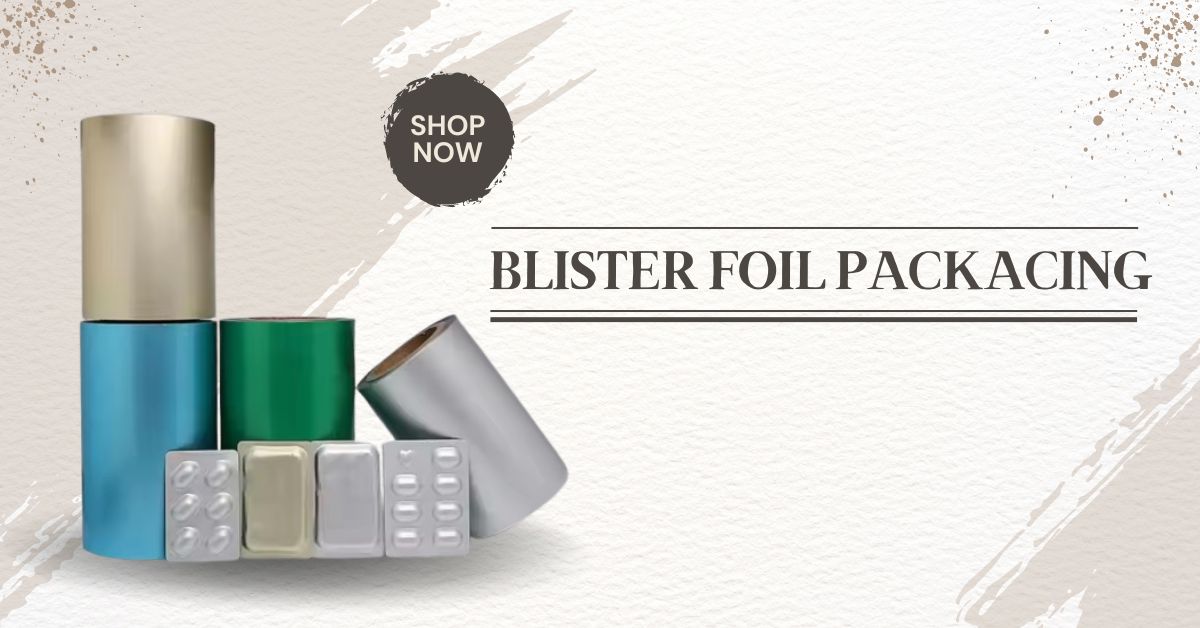When you pick up a box of pills, a pack of gum, or even some electronics, have you ever wondered about the shiny, protective packaging? That’s blister foil packaging a game-changer in keeping products safe and fresh. Let’s dive into what blister foil packaging is, how it works, and why it’s so important for manufacturers and consumers alike.
What Is Blister Foil Packaging?
Blister foil packaging is a type of product packaging that combines a rigid plastic or paperboard layer with a thin layer of aluminum foil. This creates a durable, sealed compartment (called a “blister”) that holds and protects individual items. You’ve probably seen it in:
- Pharmaceuticals: Pill packs are the most common example.
- Food Products: Think of gum or mints.
- Consumer Goods: Small items like batteries or electronics often come in blister packs.
Why Is Blister Foil Packaging So Popular?
Blister foil packaging isn’t just about aesthetics. It serves a practical purpose with several key benefits:
- Product Protection
The aluminum foil layer acts as a barrier against light, moisture, and air, keeping products safe from contamination and extending shelf life. - Tamper Resistance
The secure seal ensures that you’ll know if a product has been opened before purchase. This is crucial for medicines and food items. - Convenience
It’s easy to access individual items without exposing the rest to potential damage or contamination. - Customizable Design
Blister packs can be tailored to fit different shapes, sizes, and branding needs, making them versatile for various industries. - Eco-Friendly Options
Many companies are now using recyclable materials, making blister packaging a more sustainable choice.
Industries That Rely on Blister Foil Packaging
- Pharmaceutical Industry
- Ensures medicines stay potent by protecting them from light and moisture.
- Improves dosage accuracy by separating pills into individual compartments.
- Food and Confectionery
- Keeps gum, mints, and other snacks fresh and hygienic.
- Provides a visually appealing way to display products.
- Electronics and Consumer Goods
- Secures small items like headphones or USB drives.
- Protects products during shipping and while on store shelves.
How Is Blister Foil Packaging Made?
The process involves several steps:
- Forming the Blister
A sheet of plastic is heated and shaped to create compartments that fit the product. - Adding the Backing
The aluminum foil or paperboard backing is applied and sealed to the plastic using heat or pressure. - Printing and Branding
The packaging is customized with logos, product information, and other branding elements.
The Future of Blister Foil Packaging
With advancements in technology and growing demand for sustainable solutions, blister foil packaging is evolving:
- Biodegradable Materials: Innovations are leading to compostable or recyclable blister packs.
- Smart Packaging: Some designs now include QR codes or temperature-sensitive indicators to improve user experience.
FAQs
Q: Is blister foil packaging recyclable?
A: Some blister packs are recyclable, depending on the materials used. Look for packaging marked as eco-friendly or check local recycling guidelines.
Q: Can blister packaging be used for liquid products?
A: Generally, blister packs are not suitable for liquids but work well for solids or semi-solids.
Q: How does blister packaging compare to other types of packaging?
A: It offers superior protection and convenience, especially for products requiring individual compartments, like pills or gum.
Why Blister Foil Packaging Is Here to Stay
Blister foil packaging isn’t just practical it’s a vital part of modern-day product safety and convenience. Whether you’re a manufacturer looking for durable packaging solutions or a consumer enjoying the benefits of fresh, safe products, blister foil packaging plays a crucial role.

